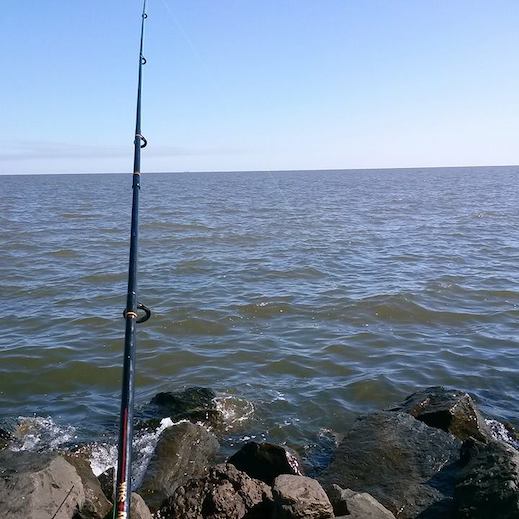Port Arthur Fishing Charters & Guides
- 24ft Center Console
- Max Guests 3
- From $550.00
- View Available Trips
- 36ft Center Console
- Max Guests 6
- From $750.00
- View Available Trips
- 24ft Center Console
- Max Guests 3
- From $550.00
- View Available Trips
- 24ft Center Console
- Max Guests 4
- From $650.00
- View Available Trips
- 25ft Bay Boat
- Max Guests 4
- From $600.00
- View Available Trips
- ft On Foot
- Max Guests 10
- From $450.00
- View Available Trips
Port Arthur Fishing Charters
Port Arthur, on the border of Texas and Louisiana, offers a rare mix of freshwater, brackish water and saltwater fishing. Being on the border of the two states, it also offers fast access to Beaumont, TX, and across the border, the famous Mississippi delta marshes. The states' border runs down the middle of Sabine Lake, a saltwater estuary that is fed by the Neches River from Texas and the Sabine River that serves as the border between Texas and Louisiana. Since Sabine Lake and the river split between the two states, each state has a reciprocity agreement for fishing. If you have a Texas license, you can fish on the Louisiana side of the water, provided you stay on the water. The reverse is also true. Fortunately, Port Arthur fishing guides know the regulations and will make sure you stay legal while having a great day on the water.
Port Arthur Freshwater Fishing
Heading upriver on either waterway puts you into freshwater. The top fish are bass, panfish and catfish. Largemouth bass are opportunistic feeders. If it moves and is small enough, a bass will eventually attack it. Improve your odds by throwing traditional lures. In spring when the bass are bedding, plastic lizards are great lures. Live shad, sometimes called shiners or roaches, will catch bass when nothing else will. Panfish is a broad category that covers bream, warmouth and crappie (pronounced CROP-ee). The bream family is quite large. Regardless, all these fish eagerly take worms, minnows and crickets fished under a cork and small spinnerbaits. When the panfish start bedding, it is easy to catch a limit. Of the three, the warmouth is the most aggressive.
Port Arthur Brackish Water Fishing
When the water turns brackish, a few saltwater species start to show up. Redfish are often caught in the same places as largemouth bass. Shrimp-imitating lures will catch both fish. Grubs and jigs are always top red producers. Fish any of these and live or cut bait under a popping cork for added sound and vibration, especially when the water is murky. Look for the reds in the shallows along channels. When the tide is high, they will be along the grass beds. When the tide is out, they hang out in the middle of the channels. If the water is shallow enough, you can often see them swimming. If you see one, more are nearby. Since reds are almost always in eating mode, finding swimming fish is a great way to catch some.
Port Arthur Inshore Fishing
Sabine Lake is considered inshore fishing since it is saltwater. Add speckled trout, black drum, croaker, bull sharks and sheepshead to the list of top fish here. Texas lists a lot more species in the lake, but some are rare and some are not regularly targeted by anglers. Rays, for instance, are often caught while trying to catch reds, trout, flounder or sharks. Trout are caught the same way, and often in the same places, as redfish. The popping cork with artificial lures or live or cut bait is just hard to beat. Trout tend to be a bit more particular about feeding; catching them in the creeks and cuts means fishing when the water is moving. Out in the lake, fishing for them at low tide means finding deeper pockets where they rest waiting for the tide to come back in town. Black drum, which can get huge, and croakers are not aggressive eaters. You need cut bait on the bottom. Croakers are found along banks and edges where they cruise looking for small shrimp, squid and small fish. Black drum swim in the channels looking for the current to push food their way.
Port Arthur Offshore Fishing
Offshore species are reef dwellers like amberjack, barracuda, cobia, grouper, shark and snapper and the migratory fish that also includes sharks, mahi mahi, mackerel, wahoo and tuna. Port Arthur fishing charters can target either set, on the same trip at your request. Catching reef fish means setting up on natural or artificial structures. Texas' offshore oil rigs are great places to connect as are the many shipwrecks, natural and artificial reefs. Use a Sabiki rig to catch your bait where you plan to fish. Stick a batfish on a hook and drop it over the side. The traveling fish are caught by trolling. Experience captains will look for sea birds diving at the surface to catch baitfish. Something under the surface is also eating them. Fishing around shrimp boats is a proven way to catch all kinds of fish offshore.




